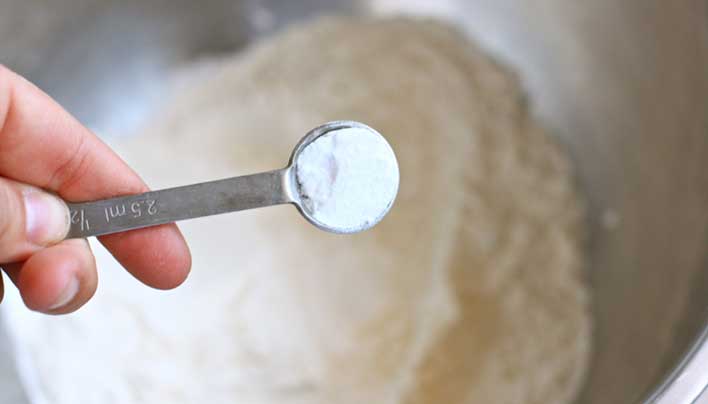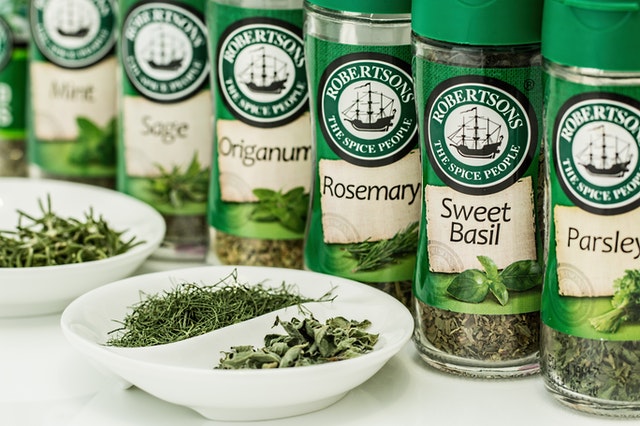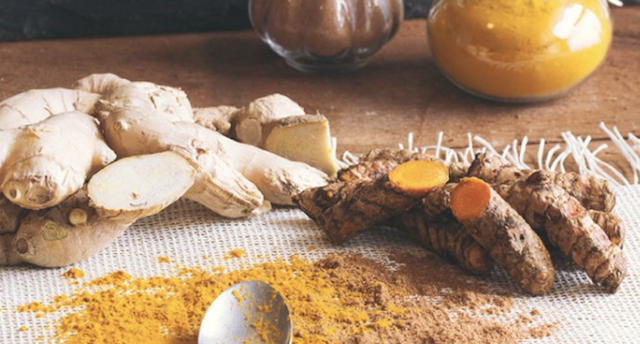51 Alternative Uses for 1 Kitchen Item
One of the things that routinely come up when you are thinking about stocking your pantry are items that you can’t eat but might need. There are a lot of chemicals or items that have numerous uses and could replace products you have right now. Baking Soda is one of the items that have a ton of uses that you might not have thought of before.
I found this list below of 51 uses for baking soda that you can use to augment all sorts of chemicals you might be buying right now. If the grid goes down, a lot of those chemicals for normal everyday tasks like cleaning, personal care, deodorizing can be done with Baking soda. Now, is this something you want in a bug out bag? Probably not, but having items like baking soda, vinegar and bleach should get their own spot on your prepping priority list.
Personal Care
1. MAKE TOOTHPASTE
A paste made from baking soda and a 3 percent hydrogen peroxide solution can be used as an alternative to commercial non-fluoride toothpaste. You can also just dip your toothbrush with toothpaste into baking soda for an extra boost.
2. FRESHEN YOUR MOUTH
Put one teaspoon in half a glass of water, swish, spit and rinse. Odors are neutralized, not just covered up.
3. SOAK ORAL APPLIANCE
Soak oral appliances, like retainers, mouthpieces, and dentures, in a solution of 2 teaspoons baking soda dissolved in a glass or small bowl of warm water. The baking soda loosens food particles and neutralizes odor to keep appliances fresh. You can also brush appliances clean using baking soda.
4. USE AS A FACIAL SCRUB AND BODY EXFOLIANT
Give yourself an invigorating facial and body scrub. Make a paste of 3 parts baking soda to 1 part water. Rub in a gentle circular motion to exfoliate the skin. Rinse clean. This is gentle enough for daily use. (for a stronger exfoliant, try one of these great 5 homemade sugar scrubs.)
5. SKIP HARSH DEODORANT
Pat baking soda onto your underarms to neutralize body odor.
6. USE AS AN ANTACID
Baking soda is a safe and effective antacid to relieve heartburn, sour stomach and/or acid indigestion. Refer to baking soda package for instructions.
7. TREAT INSECT BITES & ITCHY SKIN
For insect bites, make a paste out of baking soda and water, and apply as a salve onto the affected skin. To ease the itch, shake some baking soda into your hand and rub it into damp skin after bath or shower. For specific tips on bee stings, see bee stings: prevention and treatment.
8. MAKE A HAND CLEANSER AND SOFTENER
Skip harsh soaps and gently scrub away ground-in dirt and neutralize odors on hands with a paste of 3 parts baking soda to 1 part water, or 3 parts baking soda to gentle liquid hand soap. Then rinse clean.
9. HELP YOUR HAIR
Vinegar is amazing for your hair, but baking soda has its place in the shower too. Sprinkle a small amount of baking soda into your palm along with your favorite shampoo. Shampoo as usual and rinse thoroughly–baking soda helps remove the residue that styling products leave behind so your hair is cleaner and more manageable.
10. CLEAN BRUSHES AND COMBS
For lustrous hair with more shine, keep brushes and combs clean. Remove natural oil build-up and hair product residue by soaking combs and brushes in a solution of 1 teaspoon of baking soda in a small basin of warm water. Rinse and allow to dry.
11. MAKE A BATH SOAK
Add 1/2 cup of baking soda to your bath to neutralize acids on the skin and help wash away oil and perspiration, it also makes your skin feel very soft. Epsom salts are pretty miraculous for the bath too.
12. SOOTHE YOUR FEET
Dissolve 3 tablespoons of baking soda in a tub of warm water and soak feet. Gently scrub. You can also make a spa soak for your feet.
Cleaning
13. MAKE A SURFACE SOFT SCRUB
For safe, effective cleaning of bathroom tubs, tile and sinks–even fiberglass and glossy tiles–sprinkle baking soda lightly on a clean damp sponge and scrub as usual. Rinse thoroughly and wipe dry. For extra cleaning power, make a paste with baking soda, coarse salt, and liquid dish soap—let it sit then scour off.
14. HANDWASH DISHES AND POTS & PANS
Add 2 heaping tablespoons baking soda (along with your regular dish detergent) to the dishwater to help cut grease and foods left on dishes, pots, and pans. For cooked-on foods, let them soak in the baking soda and detergent with water first, then use dry baking soda on a clean damp sponge or cloth as a scratchless scouring powder.
15. FRESHEN SPONGES
Soak stale-smelling sponges in a strong baking soda solution to get rid of the mess (4 tablespoons of baking soda dissolved in 1 quart of warm water). For more thorough disinfecting, use the microwave.
16. CLEAN THE MICROWAVE
Baking soda on a clean damp sponge cleans gently inside and outside the microwave and never leaves a harsh chemical smell. Rinse well with water.
17. POLISH SILVER FLATWARE
Use a baking soda paste made with 3 parts baking soda to 1 part water. Rub onto the silver with a clean cloth or sponge. Rinse thoroughly and dry for shining sterling and silver-plate serving pieces.
18. CLEAN COFFEE AND TEAPOTS
Remove coffee and tea stains and eliminate bitter off-tastes by washing mugs and coffee makers in a solution of 1/4 cup baking soda in 1 quart of warm water. For stubborn stains, try soaking overnight in the baking soda solution and detergent or scrubbing with baking soda on a clean damp sponge.
19. CLEAN THE OVEN
Sprinkle baking soda onto the bottom of the oven. Spray with water to dampen the baking soda. Let sit overnight. In the morning, scrub, scoop the baking soda and grime out with a sponge, or vacuum, and rinse.
20. CLEAN FLOORS
Remove dirt and grime (without unwanted scratch marks) from no wax and tile floors using 1/2 cup baking soda in a bucket of warm water–mop and rinse clean for a sparkling floor. For scuff marks, use baking soda on a clean damp sponge, then rinse.
21. CLEAN FURNITURE
You can make a homemade lemon furniture polish, or you can clean and remove marks (even crayons) from walls and painted furniture by applying baking soda to a damp sponge and rubbing lightly. Wipe off with a clean, dry cloth.
22. CLEAN SHOWER CURTAINS
Clean and deodorize your vinyl shower curtain by sprinkling baking soda directly on a clean damp sponge or brush. Scrub the shower curtain and rinse clean. Hang it up to dry.
23. BOOST YOUR LIQUID LAUNDRY DETERGENT
Give your laundry a boost by adding 1/2 cup of baking soda to your laundry to make liquid detergent work harder. A better balance of ph in the wash gets clothes cleaner, fresher and brighter.
24. GENTLY CLEAN BABY CLOTHES
Baby skin requires the most gentle of cleansers, which are increasingly available, but odor and stain fighters are often harsh. For tough stains add 1/2 cup of baking soda to your liquid laundry detergent or a 1/2 cup in the rinse cycle for deodorization.
25. CLEAN CLOTH DIAPERS
Dissolve 1/2 cup of baking soda in 2 quarts of water and soak diapers thoroughly.
26. CLEAN AND FRESHEN SPORTS GEAR
Use a baking soda solution (4 tablespoons baking soda in 1-quart warm water) to clean and deodorize smelly sports equipment. Sprinkle baking soda into golf bags and gym bags to deodorize, clean golf irons (without scratching them!) with a baking soda paste (3 parts baking soda to 1 part water) and a brush. Rinse thoroughly.
27. REMOVE OIL AND GREASE STAINS
Use baking soda to clean up light-duty oil and grease spills on your garage floor or in your driveway. Sprinkle baking soda on the spot and scrub with a wet brush.
28. CLEAN BATTERIES
Baking soda can be used to neutralize battery acid corrosion on cars, mowers, etc. Because its a mild alkali. Be sure to disconnect the battery terminals before cleaning. Make a paste of 3 parts baking soda to 1 part water, apply with a damp cloth to scrub corrosion from the battery terminal. After cleaning and re-connecting the terminals, wipe them with petroleum jelly to prevent future corrosion. Please be careful when working around a battery–they contain a strong acid.
29. CLEAN CARS
Use baking soda to clean your car lights, chrome, windows, tires, vinyl seats, and floor mats without worrying about unwanted scratch marks. Use a baking soda solution of 1/4 cup baking soda in 1 quart of warm water. Apply with a sponge or soft cloth to remove road grime, tree sap, bugs, and tar. For stubborn stains, use baking soda sprinkled on a damp sponge or soft brush.
Deodorizing
30. DEODORIZE YOUR REFRIGERATOR
Place an open box (with baking soda) in the back of the fridge to neutralize odors.
31. DEODORIZE THE CUTTING BOARD
Sprinkle the cutting board with baking soda, scrub, rinse. For how to more thoroughly clean your cutting board.
32. DEODORIZE TRASHCANS
Sprinkle baking soda on the bottom of your trashcan to keep stinky trash smells at bay.
33. DEODORIZE RECYCLABLES
Sprinkle baking soda on top as you add to the container. Also, clean your recyclable container periodically by sprinkling baking soda on a damp sponge. Wipe clean and rinse.
34. DEODORIZE DRAINS
To deodorize your sink and tub drains, and keep lingering odors from resurfacing, pour 1/2 cup of baking soda down the drain while running warm tap water–it will neutralize both acid and basic odors for a fresh drain. (this a good way to dispose of baking soda that is being retired from your refrigerator.)
35. DEODORIZE AND CLEAN DISHWASHERS
Use baking soda to deodorize before you run the dishwasher and then as a gentle cleanser in the wash cycle.
36. DEODORIZE GARBAGE DISPOSALS
To deodorize your disposal, and keep lingering odors from resurfacing, pour baking soda down the drain while running warm tap water. Baking soda will neutralize both acid and basic odors for a fresh drain.
37. DEODORIZE LUNCH BOXES
Between uses, place a spill-proof box of baking soda in everyone’s lunch box to absorb lingering odors.
38. REMOVE ODOR FROM CARPETS
Liberally sprinkle baking soda on the carpet. Let set overnight, or as long as possible (the longer it sets the better it works). Sweep up the larger amounts of baking soda, and vacuum up the rest. (note that your vacuum cleaner bag will get full and heavy.)
39. REMOVE ODOR FROM VACUUM CLEANERS
By using the method above for carpets, you will also deodorize your vacuum cleaner.
40. FRESHEN CLOSETS
Place a box on the shelf to keep the closet smelling fresh.
41. DEODORIZING CARS
Odors settle into car upholstery and carpet, so each time you step in and sit down, they are released into the air all over again. Eliminate these odors by sprinkling baking soda directly on fabric car seats and carpets. Wait 15 minutes (or longer for strong odors) and vacuum up the baking soda.
42. DEODORIZE THE CAT BOX
Cover the bottom of the pan with baking soda, then fill as usual with litter. To freshen between changes, sprinkle baking soda on top of the litter after a thorough cleaning.
43. DEODORIZE PET BEDDING
Eliminate odors from your pets bedding by sprinkling liberally with baking soda, wait 15 minutes (or longer for stronger odors), then vacuum up.
44. DEODORIZE SNEAKERS
Keep odors from spreading in smelly sneakers by shaking baking soda into them when not in use. Shake out before wearing. When they’re no longer wearable, make sure to donate your old sneakers.
45. FRESHEN LINENS
Add 1/2 cup of baking soda to the rinse cycle for fresher sheets and towels.
46. DEODORIZE YOUR WASH
Gym clothes of other odoriferous clothing can be neutralized with a 1/2 cup of baking soda in the rinse cycle.
47. FRESHEN STUFFED ANIMALS
Keep favorite cuddly toys fresh with a dry shower of baking soda. Sprinkle baking soda on and let it sit for 15 minutes before brushing off.
Miscellaneous
49. EXTINGUISH FIRES
Baking soda can help in the initial handling of minor grease or electrical kitchen fires because when baking soda is heated, it gives off carbon dioxide, which helps to smother the flames. For small cooking fires (frying pans, broilers, ovens, grills), turn off the gas or electricity if you can safely do so. Stand back and throw handfuls of baking soda at the base of the flame to help put out the fire–and call the fire department just to be safe. (and, you should have a fire extinguisher on hand anyway).
Do you have any tips or tricks that I missed? Please share in the comments.
This has a ton of uses that you might not have thought of before.







